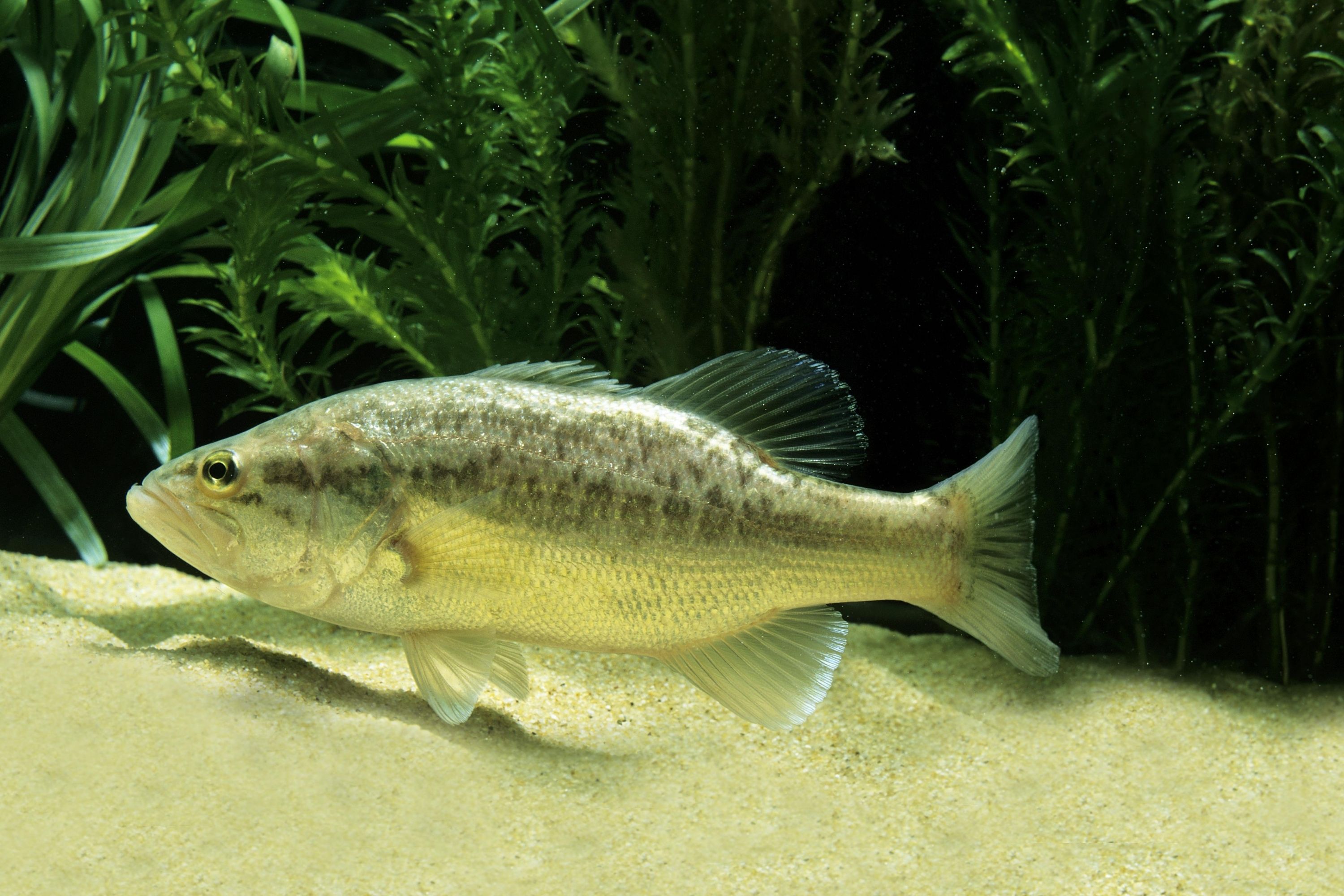Largemouth bass
(Micropterus salmoides)

Description
The largemouth bass (Micropterus salmoides) is a carnivorous freshwater gamefish in the Centrarchidae (sunfish) family, a species of black bass native to the eastern and central United States, southeastern Canada and northern Mexico, but widely introduced elsewhere. It is known by a variety of regional names, such as the widemouth bass, bigmouth bass, black bass, bucketmouth, largies, Potter's fish, Florida bass, Florida largemouth, green bass, bucketmouth bass, Green trout, gilsdorf bass, Oswego bass, LMB, and southern largemouth and northern largemouth. The largemouth bass is the state fish of Georgia and Mississippi, and the state freshwater fish of Florida and Alabama. The largemouth bass is an olive-green to greenish gray fish, marked by a series of dark, sometimes black, blotches forming a jagged horizontal stripe along each flank. The upper jaw (maxilla) of a largemouth bass extends beyond the rear margin of the orbit. The largemouth is the largest of the black basses, reaching a maximum recorded overall length of 29.5 in (75 cm) and a maximum unofficial weight of 25 pounds 1 ounce (11.4 kg). Sexual dimorphism is found, with the female larger than the male. Average lifespan in the wild is 10 to 16 years. The juvenile largemouth bass consumes mostly small bait fish, scuds, water fleas, copepods, small shrimp, and insects. Adults consume smaller fish (bluegill, banded killifish, minnows), shad, worms, snails, crawfish, frogs, snakes, salamanders, bats and even small water birds, mammals, turtle hatchlings, and alligator hatchlings. In larger lakes and reservoirs, adult bass occupy deeper water than younger fish, and shift to a diet consisting almost entirely of smaller fish like shad, yellow perch, ciscoes, suckers, shiners, other cyprinids, freshwater silversides, and sunfish (such as bluegill and green sunfish). It also consumes younger members of larger fish species, such as catfish, trout, walleye, white bass, striped bass, and even smaller black bass. Among the crayfish species preyed upon include Orconectes difficilis, Orconectes harrisonii, Orconectes hartfieldi, and Procambarus clarkii. Prey items can be as large as 50% of the bass's body length or larger. Studies of prey utilization by largemouths show that in weedy waters, bass grow more slowly due to difficulty in acquiring prey. Less weed cover allows bass to more easily find and catch prey, but this consists of more open-water baitfish.
Taxonomic tree:







